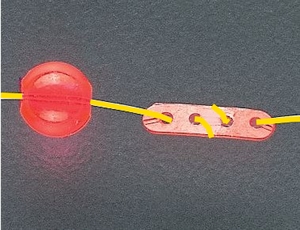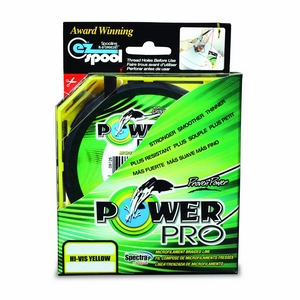mealworms
Today
we welcome Charles Burnett as our guest author.
Charles is new to the
fishing world. He picked up the sport early in 2011. A
transplant from California, he works in Information Technology field as
a project manager. He posts to the TFF regularly as "drrouter".
When I first began fishing for
bluegill, all I used were
lures. Fishing with
Rooster Tail
spinners or Rapala lures, I quickly learned that this was an expensive
way to fish,
especially for someone new. Missed
casts, unseen cover that constantly snagged my hooks all contributed to
the
expense (and frustration!) of my fishing trips.
After joining the Texas Fishing
Forum,
I began to learn that
live bait was, in all likelihood, a more effective and less costly
alternative
to artificial bait. At
first, I just
started using a combination of night crawlers and red wigglers,
experimenting
with all sorts of setups.
Transitioning
from expensive lures to real bait not only improved my fishing, but
lowered the
cost of my newly found hobby.
During one of my visits to the local
Academy Sports store, I
noticed small cups of “mealworms”.
I
didn’t know what they were used for specifically,
so I
did a bit of research and learned that they were very effective for
catching
sunfish. Over
the next few weeks I
fished with mealworms almost exclusively; I found them to work as well
for
catching sunfish as regular live worms – and definitely less messy! However, the quality of
mealworms at Academy
suffered dramatically. I
would find the
cups half empty, worms near death, etc. so I began to look online for a
different source. I
quickly figured out
that it was easier and less expensive to raise them yourself than it
was to buy
them.
 Raising
mealworms is
about as easy as it gets. First,
you
will need some sort of container that has walls that are at least 2
inches high
on both sides. I
have found that the 3
drawer storage bins are very effective.
Mealworms will need three things to breed well; a source
of food
(Oatmeal works best for this), a source of water (carrots, celery) and
a bit of
structure for them to lay their eggs.
Raising
mealworms is
about as easy as it gets. First,
you
will need some sort of container that has walls that are at least 2
inches high
on both sides. I
have found that the 3
drawer storage bins are very effective.
Mealworms will need three things to breed well; a source
of food
(Oatmeal works best for this), a source of water (carrots, celery) and
a bit of
structure for them to lay their eggs.
Your first step after buying your container is to buy some small or
medium
sized mealworms. You
do not want mealworms
that are labeled “Giant”;
these have been sprayed
with a hormone which allows them to grow larger but they will not molt
into
beetles and breed. You
also don’t need
many mealworms: 25 or so worked for me when I purchased them at
Petsmart. Next
you’ll need to put your substrate down
(a fancy word for about 1.5” of oatmeal), add the worms, some carrot
pieces and
you are set.
 Mealworms
do not like cold
temperatures, so if you want to
breed them, you’ll need to keep your farm at room temp.
Make sure you continue to give them a slice
of carrot every 2-3 days. You
can use
any type of vegetable that isn’t overly acidic.
I have used leftover lettuce, cucumbers, apples, potatoes,
etc. Just be
careful to take out anything that
becomes moldy (lettuce and carrots work best for me).
Mealworms
do not like cold
temperatures, so if you want to
breed them, you’ll need to keep your farm at room temp.
Make sure you continue to give them a slice
of carrot every 2-3 days. You
can use
any type of vegetable that isn’t overly acidic.
I have used leftover lettuce, cucumbers, apples, potatoes,
etc. Just be
careful to take out anything that
becomes moldy (lettuce and carrots work best for me).
A mealworm farm takes a couple of
months to establish. At
first you’ll see small little pencil-lead
sized meal worms, usually in the corners.
They will grow larger over time, ending up at about 1”
long before they
molt into pupa. It
takes about 3-5 weeks
after the first signs of newly hatched mealworms for them to be of size
suitable for fishing. You’ll
want to
leave about half your mealworms in your farm, so they can molt into
pupa. The pupa
stage will last about a week, after
which mealworms will turn into beetles.
A lot of pupa won’t make it through to the stage of
becoming a beetle,
so don’t be alarmed if many of them die during this phase.
After your initial batch of worms, depending upon your consumption
rate, you
will need to truncate your farm. Beetles
will produce rapidly and soon your initial farm will be overgrown. I only use mealworms for
myself; I don’t sell
them, etc. so I’ll occasionally prune the farm, throwing excess
mealworms into
the local pond. It’s
my experience
that you
only need 20-25 beetles to sustain a farm that provides enough worms
for
fishing.
 After
your farm is established, every few months or so, you’ll need to
sift
through your bins and transfer your mealworms to new substrate. This is very important. Your mealworms are eating,
eliminating waste,
etc. in their home and over time this will affect the health of the
colony.
After
your farm is established, every few months or so, you’ll need to
sift
through your bins and transfer your mealworms to new substrate. This is very important. Your mealworms are eating,
eliminating waste,
etc. in their home and over time this will affect the health of the
colony.
To use mealworms for fishing, I use
empty pill bottles with
a bit of oats in them for transport.
I
also recommend using either fly or very small 10 or 12 sized hooks. You can utilize mealworms
as you would any
other live bait, with a drop shot, under a bobber, etc.
However, the most effective method I have used
is a weighted bobber with the hook 10-12” below, allowing the mealworm
to
gently sink, as if it just fell from a tree.
Mealworms can be an easy, inexpensive and fun way to raise your own
bait. I still use
other live baits, but during the
spring, summer and early fall seasons I have found that mealworms are a
very
effective, low cost way for catching sunnies!




 Raising
mealworms is
about as easy as it gets.
Raising
mealworms is
about as easy as it gets. Mealworms
do not like cold
temperatures, so if you want to
breed them, you’ll need to keep your farm at room temp.
Mealworms
do not like cold
temperatures, so if you want to
breed them, you’ll need to keep your farm at room temp. After
your farm is established, every few months or so, you’ll need to
sift
through your bins and transfer your mealworms to new substrate.
After
your farm is established, every few months or so, you’ll need to
sift
through your bins and transfer your mealworms to new substrate.





















